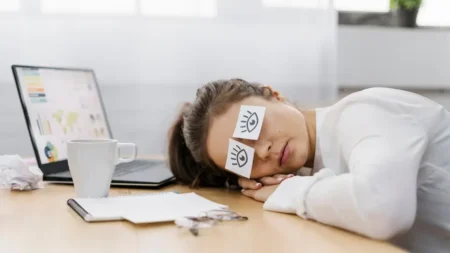 You don’t need to hate your job or go through a trauma to burn out. Emotional burnout can sneak in slowly — through constant pressure, lack of rest, or trying to hold everything together while pretending you’re fine. At first, it just feels like tiredness. But over time, it chips away at your focus, mood, and sense of purpose.
You don’t need to hate your job or go through a trauma to burn out. Emotional burnout can sneak in slowly — through constant pressure, lack of rest, or trying to hold everything together while pretending you’re fine. At first, it just feels like tiredness. But over time, it chips away at your focus, mood, and sense of purpose.
Understanding what burnout really looks like is the first step to stopping it.
What Emotional Burnout Feels Like
Burnout isn’t just about being “tired.” It’s a deep, chronic state of exhaustion — emotional, mental, and sometimes physical. You might feel like your brain is foggy all the time. Or stop looking forward to things you used to enjoy. You may feel numb or detached from people. Even small tasks begin to feel overwhelming.
It’s often misunderstood or mislabeled as laziness, depression, or “just stress.” But burnout is its own thing — and it needs attention.
Why It Happens
Burnout builds over time when your energy output constantly exceeds your recovery. This can happen in any environment — not just at work. Caregivers, parents, students, entrepreneurs, and even teens can hit their limit when rest, support, and balance are missing.
Unrealistic expectations, lack of boundaries, people-pleasing habits, and internal pressure to “keep it all together” only make it worse.
What You Can Do to Recover
Burnout recovery isn’t about taking one weekend off or just sleeping in. It’s about making real, lasting changes — and giving yourself permission to rest and reset.
Start by being honest with yourself. Recognize what’s draining you, and pause long enough to feel it. Reduce unnecessary obligations, create space to do nothing, and seek out what brings you peace — not performance. Gentle movement, better sleep, quiet time, journaling, and connection with others all help.
But when burnout is deep, personal support makes a difference. In Tampa, Bethesda Revive Counseling Services offers therapy that helps clients deal with burnout, anxiety, and emotional exhaustion. Their team helps people understand the patterns that led them to burnout — and guides them gently back toward a grounded, balanced state of mind.
Final Thought
Burnout isn’t weakness. It’s a message. A signal that something needs to change — not in who you are, but in how you’re living. The good news? You don’t have to fix it alone. Recovery is possible, and so is a version of life where you’re not just functioning — but actually feeling like yourself again.
Picture Credit: Freepik
